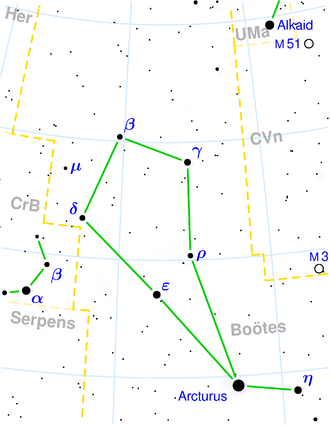NGC 5695
| Galaxy NGC 5695 |
|
|---|---|

|
|
| SDSS recording | |
| AladinLite | |
| Constellation | Bear keeper |
|
Position equinox : J2000.0 , epoch : J2000.0 |
|
| Right ascension | 14 h 37 m 22.1 s |
| declination | + 36 ° 34 ′ 04 ″ |
| Appearance | |
| Morphological type | SBa / Sy2 |
| Brightness (visual) | 12.7 mag |
| Brightness (B-band) | 13.6 mag |
| Angular expansion | 1.5 ′ × 1.1 ′ |
| Position angle | 150 ° |
| Surface brightness | 13.1 mag / arcmin² |
| Physical data | |
| Affiliation | LGG 385 |
| Redshift | 0.014093 +/- 0.000030 |
| Radial velocity | (4225 +/- 9) km / s |
|
Stroke distance v rad / H 0 |
(193 ± 13) · 10 6 ly (59.1 ± 4.1) Mpc |
| history | |
| discovery | William Herschel |
| Discovery date | May 1, 1785 |
| Catalog names | |
| NGC 5695 • UGC 9421 • PGC 52261 • CGCG 192-049 • MCG + 06-32-077 • IRAS 14353 + 3647 • 2MASX J14372214 + 3634040 • Mrk 686 • GC 3948 • H II 423 • h 1851 • LDCE 1069 NED006 | |
NGC 5695 is a bar-spiral galaxy with an active galaxy core of the Hubble type SBb in the constellation Bear Keeper in the northern sky . It is estimated to be 193 million light years away from the Milky Way and has a diameter of around 85,000 ly.
In the same area of the sky are the galaxies NGC 5684 and NGC 5686 , among others .
The object was discovered on May 1, 1785 by the astronomer William Herschel with the help of his 18.7 inch mirror telescope and was later included in his New General Catalog by Johan Dreyer .
